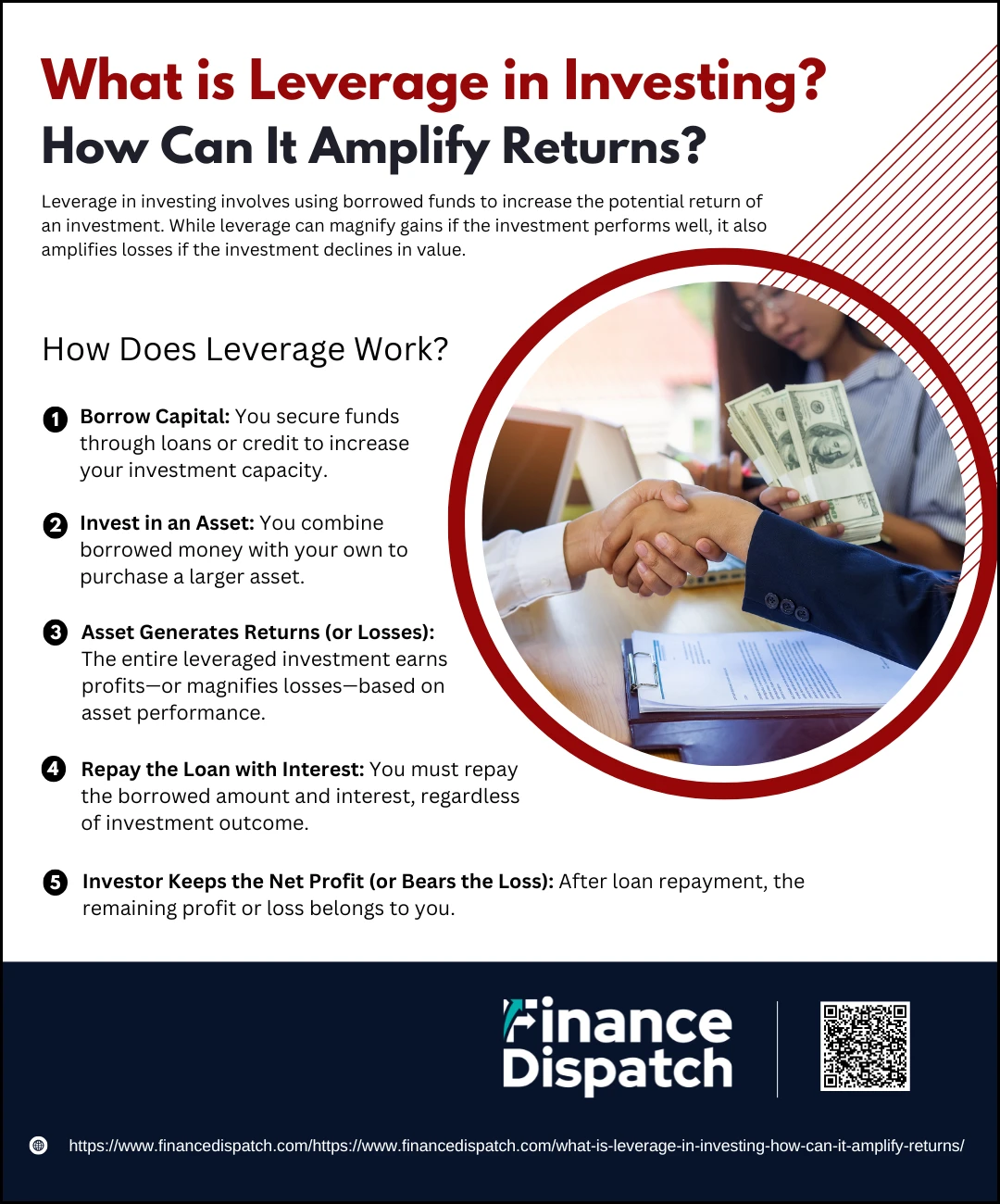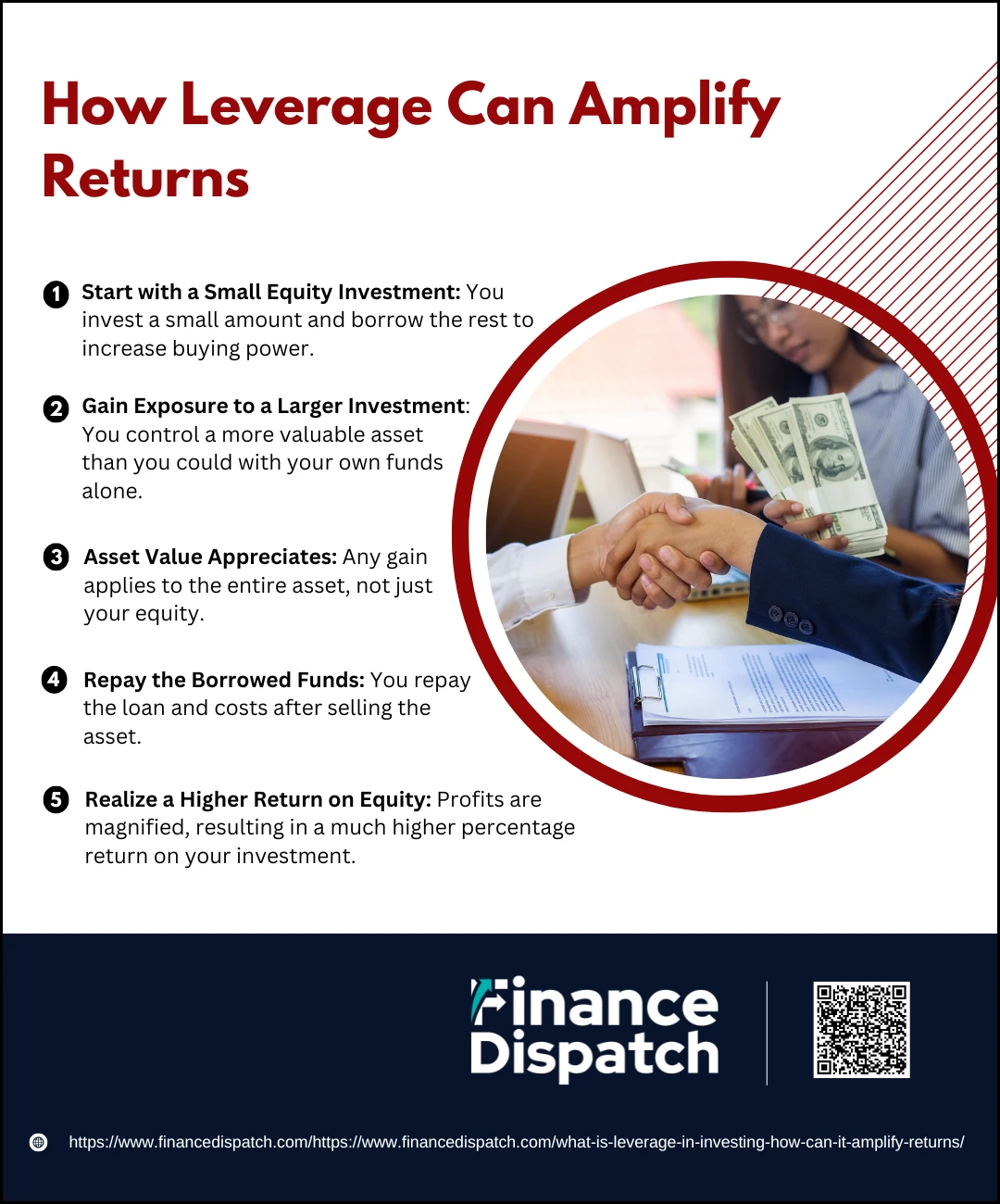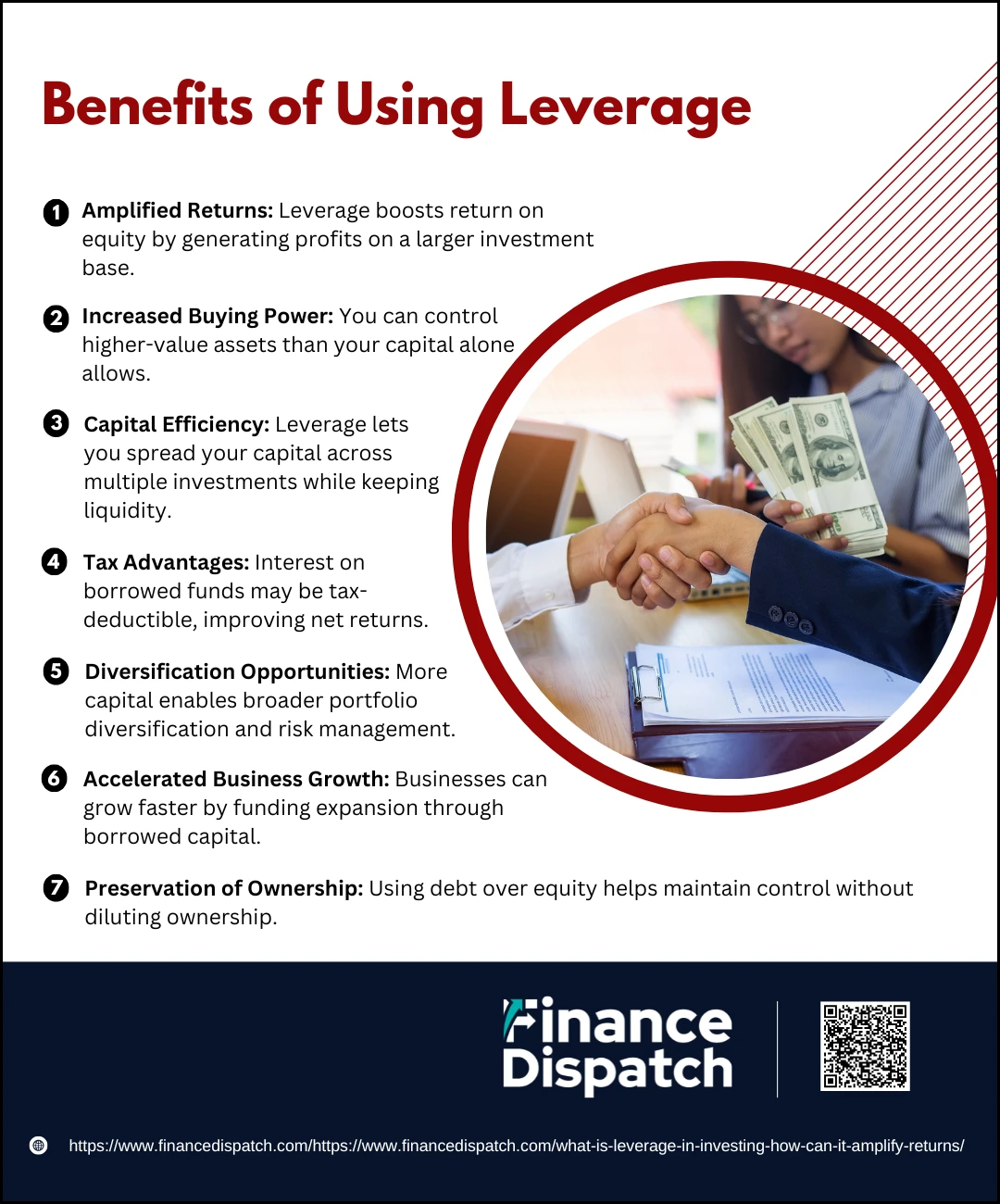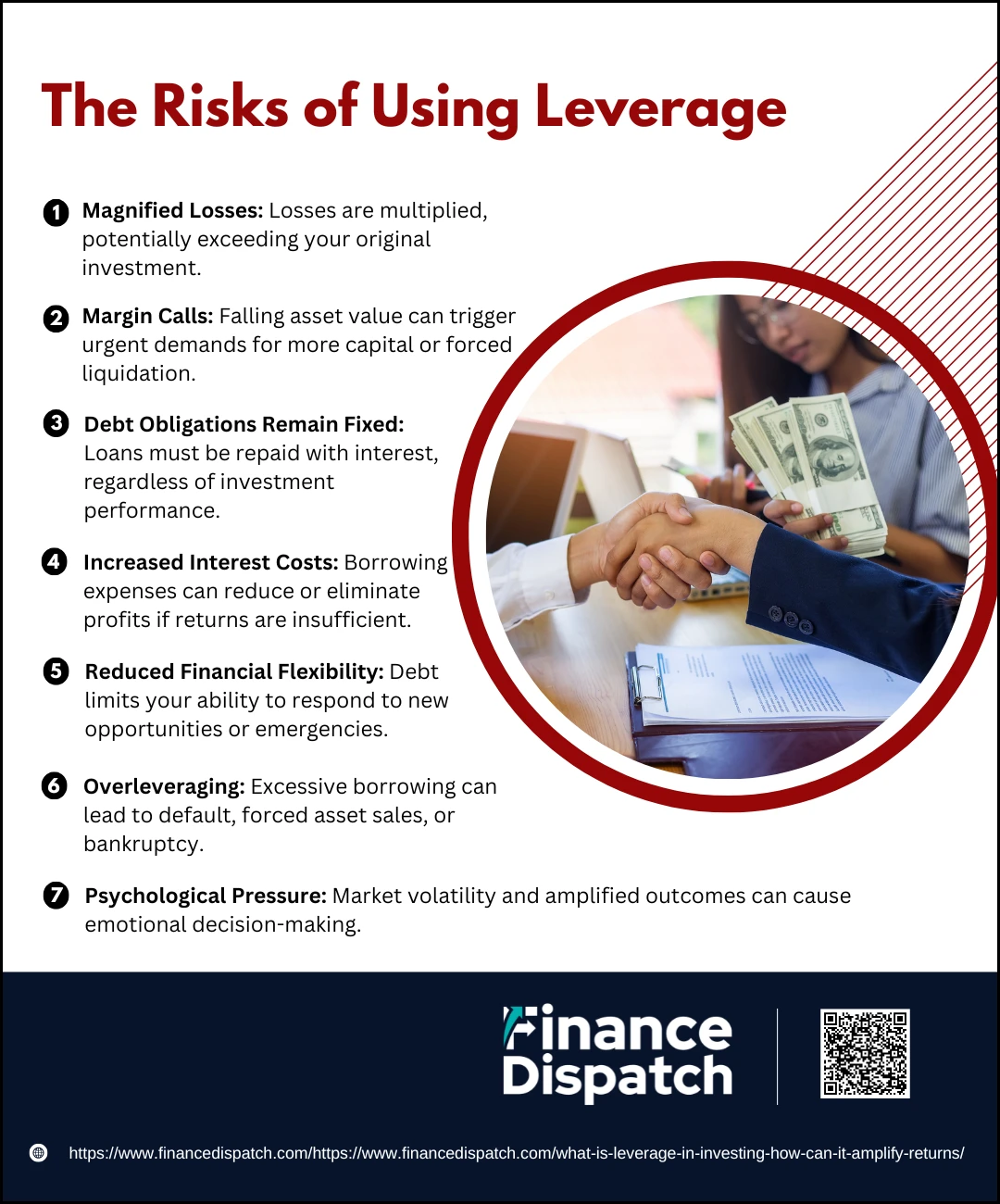When it comes to investing, the concept of leverage often sparks both excitement and caution. At its core, leverage simply means using borrowed money to invest in assets with the goal of increasing potential returns. Rather than relying solely on your own capital, you use additional funds—often from a lender or broker—to take a larger position in an investment. This strategy can significantly amplify profits when things go well, making it an attractive option for investors and businesses alike. However, leverage also carries a heightened level of risk, as losses can be magnified just as quickly. In this article, we’ll break down what leverage in investing really means, explore how it works, and explain how it can both boost and jeopardize your financial gains.
What is Leverage in Investing?
Leverage in investing refers to the strategic use of borrowed funds to increase the potential return on an investment. Instead of relying solely on your own money, you borrow capital—typically through loans, margin accounts, or other financial instruments—to gain greater exposure to an asset. This allows you to control a larger investment with a smaller initial outlay. For example, an investor might use leverage to purchase $10,000 worth of stock by putting up only $5,000 of their own money and borrowing the rest. If the investment performs well, the gains are magnified relative to the amount of personal capital invested. However, the same holds true for losses, which can exceed the original investment. Leverage is commonly used in real estate, stock trading, and business financing, and while it can accelerate wealth-building, it also introduces a higher degree of financial risk.
 How Does Leverage Work?
How Does Leverage Work?
Leverage enables individuals or businesses to increase their investment power by borrowing money. The main goal is to earn a return that exceeds the cost of borrowing. It’s a powerful strategy because it allows you to take advantage of opportunities that might be out of reach with your own limited funds. However, using leverage also means taking on more risk. Understanding each step of how leverage works can help you evaluate when it’s the right strategy—and when it’s not.
1. Borrow Capital
The first step in leveraging is securing borrowed funds. This can come in the form of a loan, a margin account through a brokerage, or even issuing bonds in the case of a company. The terms of borrowing—including the interest rate, repayment period, and collateral required—depend on the lender and the type of leverage being used. This borrowed capital increases the total amount of money available for investment.
2. Invest in an Asset
Once the capital is borrowed, it’s combined with the investor’s own funds to make a larger investment. For instance, if you have $10,000 and borrow an additional $20,000, you now have $30,000 to invest—triple your original capacity. This could be used to purchase more shares of stock, acquire real estate, or invest in business operations. The purpose of this step is to gain control over a more valuable asset than what would be possible with your own money alone.
3. Asset Generates Returns (or Losses)
The investment now has the potential to produce returns—like stock price appreciation, rental income, or business profits—based on the entire leveraged amount. If the asset performs well, those returns will be much higher than what your original investment could have achieved. However, if the investment loses value, the losses also grow because they are calculated on the total leveraged amount, not just the investor’s equity.
4. Repay the Loan with Interest
Regardless of how the investment performs, the borrowed amount must be repaid along with any interest, fees, or premiums agreed upon with the lender. These borrowing costs are crucial—they must be covered by the returns in order for leverage to be profitable. If the investment doesn’t yield enough to cover these expenses, the investor ends up losing money even if there’s only a slight decline in asset value.
5. Investor Keeps the Net Profit (or Bears the Loss)
After repaying the loan and associated costs, any leftover profit belongs to the investor. This is where leverage shows its true power—by amplifying the returns on the investor’s original equity. However, if the investment underperforms or crashes, the investor may not only lose their own capital but also still owe money. This can result in debt obligations, margin calls, or even bankruptcy in severe cases.
Common Types of Leverage in Investing
Leverage can be used in several different ways across various investment strategies, depending on the asset class and the investor’s goals. Whether you’re an individual investor or a large corporation, leveraging gives you the ability to control larger positions, increase potential returns, or finance operations with limited upfront capital. Understanding the common types of leverage helps you choose the most suitable method based on your experience, risk tolerance, and financial objectives.
Here are the most common types of leverage in investing:
1. Margin Trading
This involves borrowing money from a brokerage firm to buy more stocks or other securities than you could with your own cash. You open a margin account and typically deposit a percentage of the investment’s value (often 50%), while the broker lends the rest. If your investment rises, your gains are amplified—but if it falls, you may face margin calls and larger losses than your initial investment.
2. Options Contracts
Options give you the right, but not the obligation, to buy or sell an underlying asset at a specific price. A single option contract usually controls 100 shares, allowing you to gain exposure to larger positions with less capital. Because of this built-in leverage, options can generate large returns—but they also carry the risk of expiring worthless if the market moves against you.
3. Futures Contracts
Futures are standardized agreements to buy or sell an asset at a future date for a predetermined price. These contracts require only a small initial margin (often 5-10% of the contract’s total value), but expose the investor to the full value of the asset. This high degree of leverage makes futures attractive for traders seeking amplified returns, though it comes with high risk and potential for rapid losses.
4. Leveraged ETFs
Leveraged Exchange-Traded Funds use financial derivatives and debt to magnify the returns of a particular index or asset class. For example, a 2x leveraged ETF aims to deliver twice the daily return of the underlying index. These are designed for short-term trading rather than long-term holding, as compounding effects can distort returns over time.
5. Business Debt Financing
Companies often use leverage through debt financing—such as loans, bonds, or lines of credit—to fund operations, acquisitions, or growth. This is known as financial leverage. By using debt instead of equity, companies can retain ownership while potentially increasing their return on equity (ROE). However, high debt levels also raise the risk of financial distress during downturns.
 How Leverage Can Amplify Returns
How Leverage Can Amplify Returns
Leverage is often used as a strategy to enhance profitability by increasing the size of an investment without requiring a proportional increase in personal capital. The core idea is that by borrowing funds to invest in an asset that appreciates or generates income, your returns can grow substantially—because you’re earning a return on a larger base, not just on your original equity. However, it’s important to understand how the math works in your favor only if the investment performs well. Here’s how leverage increases your potential returns, step by step:
1. Start with a Small Equity Investment
Leverage allows you to contribute a smaller portion of your own money while covering the rest with borrowed funds. For instance, you invest $20,000 of your own money to acquire a $100,000 asset, borrowing the remaining $80,000. Your total exposure is $100,000, but your personal capital at risk is only $20,000.
2. Gain Exposure to a Larger Investment
Instead of being limited to buying a $20,000 asset with your own cash, leverage enables you to control a much more valuable asset. This broader exposure means that even modest gains in the asset’s value can translate into sizable gains relative to your actual cash investment.
3. Asset Value Appreciates
Let’s say the asset appreciates by 10% and is now worth $110,000. This $10,000 gain is based on the entire asset value, not just your $20,000 equity. Without leverage, a 10% gain on your investment would yield $2,000; with leverage, it’s $10,000 before costs.
4. Repay the Borrowed Funds
You sell the asset for $110,000, repay the $80,000 loan, and cover $2,000 in interest or fees. This leaves you with $28,000 ($110,000 – $80,000 loan – $2,000 interest). Since you initially invested $20,000, your net profit is $8,000.
5. Realize a Higher Return on Equity
Your $8,000 gain on a $20,000 investment equals a 40% return—four times higher than the 10% asset appreciation. This is the power of leverage: boosting return on equity (ROE) well beyond what would be possible with an all-cash investment.
 Benefits of Using Leverage
Benefits of Using Leverage
Leverage can be a game-changer when it comes to growing wealth or expanding a business. Instead of relying solely on your own capital, you tap into borrowed funds to take larger positions, diversify your holdings, or fuel expansion. When used wisely, leverage offers several strategic advantages—allowing you to multiply your financial potential without necessarily multiplying your personal investment. Below are the major benefits of using leverage in investing:
1. Amplified Returns
Leverage allows you to earn profits not just on your capital, but on the total invested amount—which includes the borrowed funds. For example, if you invest $20,000 of your own money and borrow $80,000 to purchase a $100,000 asset, a 10% gain results in a $10,000 return. That’s a 50% return on your original investment—not just 10%. When everything goes right, leverage dramatically boosts your return on equity.
2. Increased Buying Power
With leverage, your limited funds no longer restrict the size of your investments. You can control assets that are many times larger than your equity alone would allow. This is especially useful in markets like real estate or stocks, where high-value assets can yield consistent long-term gains but require substantial upfront capital.
3. Capital Efficiency
Instead of tying up all your funds in one investment, leverage allows you to spread your capital across multiple opportunities. This means you can maintain liquidity and keep cash available for other ventures or emergencies. It’s a smart way to put your money to work more effectively without overcommitting.
4. Tax Advantages
In many regions, the interest you pay on borrowed capital—such as mortgage interest or business loan interest—is tax-deductible. This can reduce your overall tax liability, improving your net return. For investors and companies alike, this tax shield can enhance profitability when managed correctly.
5. Diversification Opportunities
Leverage gives you more capital to allocate across different types of assets or markets. Instead of going all-in on a single stock or property, you can use leverage to build a diversified portfolio—helping to manage risk and create more stable long-term returns.
6. Accelerated Business Growth
Companies often use leverage to scale up quickly. By borrowing to fund acquisitions, expand operations, or invest in product development, businesses can generate revenue growth faster than if they relied solely on retained earnings or investor capital. This makes leverage a critical tool for strategic expansion.
7. Preservation of Ownership
When companies raise money through debt rather than issuing new equity, they avoid diluting ownership among shareholders. This means founders and early investors maintain control of the company while still accessing the capital they need. For entrepreneurs, this can be a significant advantage in maintaining vision and decision-making power.
 The Risks of Using Leverage
The Risks of Using Leverage
While leverage can significantly enhance returns, it comes with equally powerful risks. The very mechanism that multiplies profits can just as easily magnify losses. Using borrowed funds means you’re not only responsible for repaying the loan, but also for covering interest and fees—regardless of how your investment performs. Poor market timing, price volatility, or a drop in asset value can lead to substantial financial losses, sometimes even exceeding your original investment. Here are some of the major risks you need to understand before using leverage:
1. Magnified Losses
Just as leverage boosts gains, it can amplify losses if the investment value drops. A small percentage decline in a leveraged position can lead to disproportionately large losses on your equity—potentially wiping out your investment entirely.
2. Margin Calls
If the value of your leveraged investment falls below a certain level, your broker may issue a margin call, requiring you to deposit more cash or sell assets. If you can’t meet the margin requirement, your position could be liquidated at a loss—often at the worst possible time.
3. Debt Obligations Remain Fixed
No matter how your investment performs, you are still required to repay the borrowed funds, along with any interest. This fixed repayment structure can be a heavy burden, especially during market downturns or unexpected financial hardships.
4. Increased Interest Costs
The cost of borrowing—interest rates, loan fees, or margin rates—can eat into your returns. If your investment doesn’t earn more than the cost of the leverage, your net return may be minimal or negative, even if the asset gains value.
5. Reduced Financial Flexibility
Leverage can lock up your cash flow, making it harder to respond to new opportunities or unexpected expenses. High levels of debt reduce your ability to make financial decisions freely and may even affect your creditworthiness.
6. Overleveraging
Taking on too much debt in pursuit of higher returns can lead to financial instability. Overleveraged investors or companies may struggle to cover loan payments, especially during economic downturns—sometimes resulting in forced asset sales, default, or bankruptcy.
7. Psychological Pressure
Managing a leveraged position adds emotional stress, especially during market volatility. Watching amplified swings in your portfolio can lead to panic-driven decisions, which may hurt long-term performance more than the leverage itself.
When Should You Consider Using Leverage?
Leverage isn’t a one-size-fits-all strategy—it works best in specific situations and for certain types of investors. While it can enhance your returns, it also raises the stakes, so knowing when it makes sense to use leverage is critical. Generally, leverage should only be considered when you have a strong understanding of the investment, a solid financial cushion, and a risk tolerance that can handle market swings. Below are some situations where using leverage may be appropriate:
- You Have a High Risk Tolerance: If you’re comfortable with potential losses and can handle significant fluctuations in your portfolio, leverage might suit your investment style.
- You Understand the Investment Thoroughly: Using leverage is best when you have in-depth knowledge of the asset class, the market conditions, and the risks involved.
- You Have Stable Cash Flow or Income: A reliable source of income can help you cover interest payments, margin calls, or other obligations that come with borrowing.
- You’re Pursuing Short-Term Opportunities: Leverage can be useful for short-term trades where timing is key and you’ve identified a high-probability opportunity to earn quick returns.
- Interest Rates Are Low: When borrowing costs are low, the risk/reward trade-off becomes more favorable, making leverage a more attractive tool.
- You’re looking to Scale a Business or Investment: Business owners often use leverage to fund expansion or acquire assets—especially when growth potential outweighs the cost of debt.
- You Want to Diversify without Fully Committing Capital: Leverage allows you to spread your investments across multiple assets without tying up all your personal funds, helping with portfolio diversification.
- You Have a Defined Exit Strategy: Leverage works best when you have a clear plan for repaying the debt, exiting the investment, or managing downside risk.
Tips for Managing Leverage Wisely
Using leverage can be a powerful way to enhance your investment potential—but only if it’s managed with caution and discipline. Successful leveraging requires more than just borrowing money; it involves careful planning, risk control, and an understanding of how debt impacts your portfolio or business. Without a solid strategy, leverage can quickly become a liability. Here are key tips to help you use leverage wisely and protect yourself from unnecessary financial risk:
- Know Your Risk Tolerance: Understand how much volatility you can emotionally and financially handle before leveraging any investment. If you panic during downturns, leverage may not be right for you.
- Use Leverage Conservatively: Start small. Avoid overleveraging, especially if you’re new to it. A moderate amount of debt can be effective without putting your entire investment at risk.
- Set Clear Investment Goals: Have a specific plan in place for why you’re using leverage—whether it’s for short-term gains, long-term growth, or portfolio diversification.
- Maintain an Emergency Buffer: Always keep extra cash or liquidity available to cover loan payments, margin calls, or market downturns. Never invest with borrowed money that you can’t afford to lose.
- Track Your Leverage Ratios: Regularly monitor metrics like debt-to-equity or margin levels. Staying within reasonable limits ensures you don’t drift into dangerous financial territory.
- Monitor Interest Rates and Fees: Understand how borrowing costs impact your potential returns. Rising interest rates can quickly eat into profits or turn a winning investment into a loss.
- Use Stop-Loss Orders and Risk Management Tools: In trading, protect your positions by setting stop-loss levels to limit potential damage. Always have a risk management plan in place.
- Reassess Regularly: Markets change—so should your strategy. Review your leverage use periodically to ensure it still aligns with your financial goals and market conditions.
- Have a Clear Exit Strategy: Know when and how you plan to repay the debt or close the position. Having an exit plan prevents reactive decisions in uncertain situations.
Conclusion
Leverage can be a powerful financial tool when used strategically, allowing investors and businesses to amplify returns, increase buying power, and grow more efficiently. However, it also comes with significant risks that can quickly outweigh the benefits if not managed carefully. Understanding how leverage works, when to use it, and how to control its impact is essential to making informed financial decisions. Whether you’re investing in stocks, real estate, or expanding a business, the key to successful leveraging lies in balancing opportunity with caution. By approaching leverage with clear goals, a strong risk management plan, and financial discipline, you can harness its potential while protecting yourself from its downsides.



